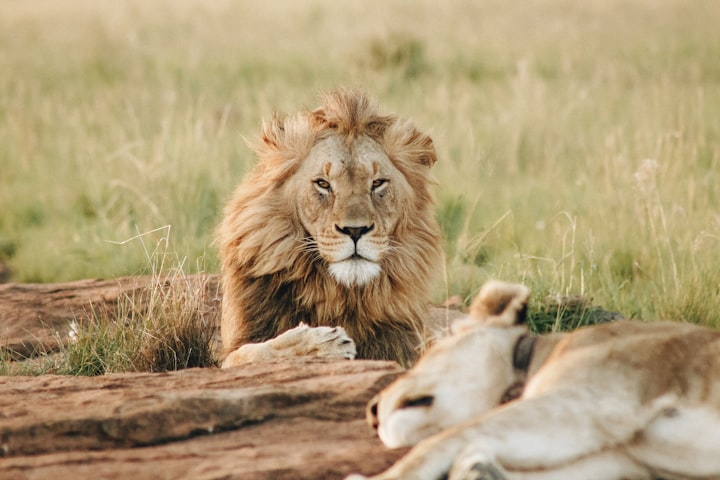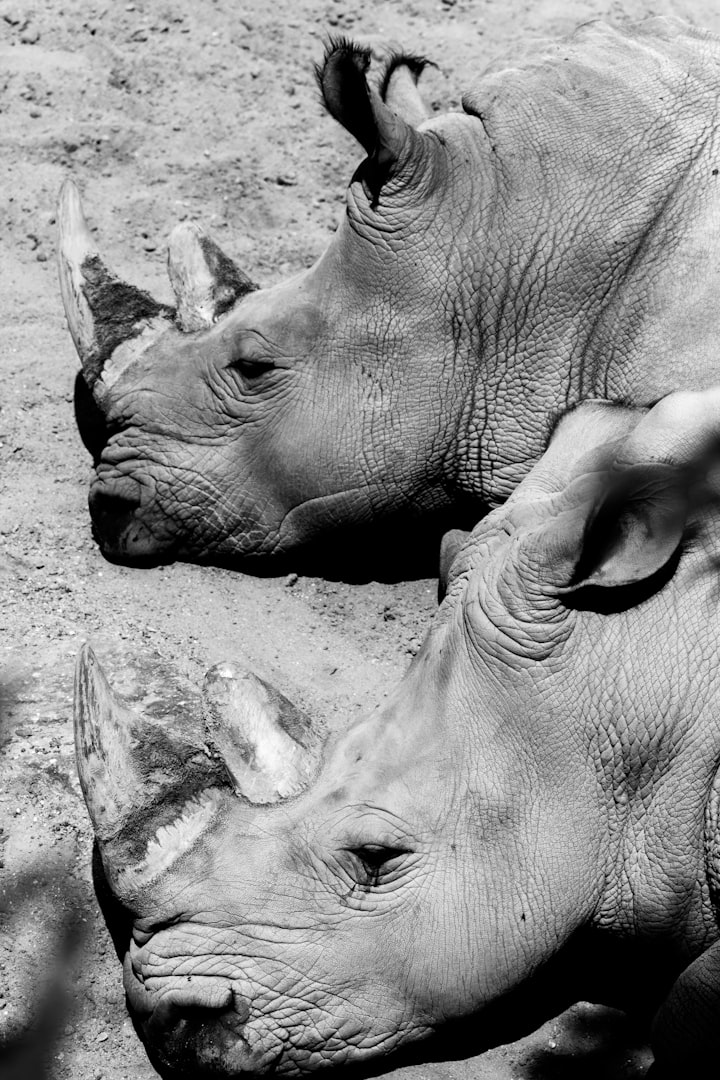13 Tips You Should Know to Survive Wild Animal Attacks
Tips for Animal Encounters

Many wild animals can be dangerous or even fatal for a person. If you look at the statistics, you might feel terrified. Sharks cause just six deaths a year; their infamous reputation is very exaggerated. Wolves are responsible for 10 deaths annually, while lions kill 22 people a year. Now, get ready—elephants, cute lovely giants, are the reason that more than 500 people lose their lives every year. Hippopotamuses equal them in this scary competition. Crocodiles turn out to be much more dangerous than sharks, causing about 1,000 deaths a year. But the champion here is the snake—100,000 people meet their end at the teeth of this reptile.
To prepare you for any situation you can find yourself in, we've gathered 13 ways that will save your life if you have such an unpleasant encounter.

Number 13: Sharks
The good news is that out of 150 species of sharks existing on earth, only 20 attack humans. Most of them just don't perceive you as food. So, if not something tasty, what good are you? Now, down to the bad news. If a shark gets interested in you, it will be tough to break away. To not attract sharks, prevent blood or urine from getting into the water. Sharks can smell these at a distance of several miles. If you do meet face to face, don't turn your back on this predator, especially don't try to escape in a panic. You will look like prey this way. Move slowly. If you have been caught, aim at the eyes and gills—these zones are the most sensitive.

Number 12: Kangaroos
Yes, surprisingly, a kangaroo can pose a threat to a person. However, it will only happen if you enter its territory and the animal feels danger. To avoid a conflict, do the following: cough. Your coughs should be short and quiet. The kangaroo will consider it a sign of a disease and most likely won't attack you. Slowly back away. This way, you will look smaller, therefore less dangerous. Don't turn away and run; it will only provoke the animal. Remember that kangaroos are perfect jumpers—it will catch up with you in a few moments.

Number 11: Lions
If you have encountered a lion, maintain eye contact. Don't turn your back and don't move your eyes away—it will give the predator the time to attack. Try to look more massive; to create such an impression, lift your arms and jacket up. If you look big and threatening, the animal will try to avoid the encounter. Speak to the lion in a reasonably loud and confident voice. Make sounds and gesticulate—such behavior isn't typical for a victim. This way, you will baffle the predator, so it will perceive you as an irritating presence, which is better to stay away from.

Number 10: Elephants
Elephants are clever and quite friendly animals, but they are known to attack people, especially true about female elephant mothers if they decide that you are dangerous for their babies. If you come across an elephant, pay attention to their body language. If their trunk is curled and the ears are pulled back, it means they are going to crush you. If the animal approaches, don't run; try to find something to become a barrier between you and the elephant—it can be a stone or a tree.

Number 9: Rhinoceroses
Rhinoceroses have bad eyesight, which makes it easy to frighten them and provoke them to attack. These animals' speeds can reach 37 miles per hour, making it really hard to outrun them—but not impossible. The only way to escape from a rhinoceros is to hide behind a tree. It's a substantial obstacle for the animal, and it won't follow you through bushes or high grass.

Number 8: Hippopotamuses
These animals seem cute, but this image is very misleading—they can be extremely dangerous. Despite their weight, hippopotamuses can run at a speed of 18.5 miles per hour. They don't have a perfect character as well. Angering them is easy-peasy. If the weather is hot, try not to enter the bushes. The level of water lowers during the drought, so the hippos hide in the high grass. To make the animals leave you alone, climb a tree, rock, or a steep hill. Wait there until it goes away.

Number 7: Bulls
Despite the widespread opinion, bulls react to movement, not to the red or any other color. So, if a bull is running at you, stay straight and still. Use your hat, t-shirt, or other clothes you have at hand as bait. When the animal runs up close enough, throw the thing as far away from you as possible. The bull will change direction and follow this object.

Number 6: Jellyfish
A jellyfish burn brings a long-lasting nagging ache. Some people believe that peeing on the damaged surface can relieve the pain, but it is just an urban legend. Immediately after being burnt, wash this place with salt water. Pure water will only worsen the situation. After that, using a pair of tweezers or a stick, move the remaining parts of the jellyfish away. If you have antihistamine ointment, apply it to the place of the burn.

Number 5: Alligators or Crocodiles
The jaws of these animals are the strongest on the planet. In this case, breaking free won't be a piece of cake. If you've been grabbed, hit the eyes. The eyes and the throat of these animals are their most sensitive areas. To make the animal let you go, aim at them. If you notice that the predator is crawling toward you on the ground, make as much noise as possible, run in a zigzag. If you see a crocodile while swimming, don't create splashes, don't shout. It will draw unwanted attention. Try to be as quiet as you can and swim away.

Number 4: Snakes
Most snakes are neither dangerous nor poisonous. People get 80% of their bites trying to catch this reptile. If you notice that a snake is following you, stomp your feet. Vibrations will confuse the snake, and it will let you be. If you have been bitten, don't try to suck the poison out from the wound as they do in the movies. Better to wash the bite with running water, apply a tourniquet, and call an emergency number.

Number 3: Bears
Bears attack people quite rarely, but if you get in the wrong place at the wrong time, it might still happen. It is necessary to know several behavioral rules. Don't run. If you run, you will look like prey, and a wild animal will follow you, at least out of instinct. And if you think that you cannot outrun a bear, forget it. They can develop a speed of 30 miles per hour. Fall to the ground and curl into a ball. Use your hands to cover your neck. Pretend to be dead. This way, you won't be considered as a threat any longer. The bear might toss you around for a bit. Don't panic. Play dead a bit longer, even if it leaves you alone because these smart animals often stay around and watch their prey.

Number 2: Gorillas
Gorillas are called the kings of the jungle, not without reason. They are leaders who protect their family and land. They won't attack you if you behave obediently. Sit down to seem less large and not to tower over the gorilla. Try to whisper and avoid direct eye contact. In case of an attack or approach, curl into a ball. Gorillas are proud animals. As a rule, they won't attack the weak and defenseless.

Number 1: Bees
Bees will protect their hive. They can bite even if you are just walking by. Dark colors attract bees' attention. That's why if you're dressed in a black t-shirt, your chances of being stung by these insects are much higher. If a hive of bees or just several of them are following you, hide in a dark place. A lack of proper lighting will throw the insects off your track.
We hope you will never have to escape from a rhinoceros, swim away from a crocodile, or meet a hungry lion. However, now you will be able to protect yourself in the wilderness. Share this video with your friends. Make sure they stay safe, and we will appreciate your likes. The more of them we get, the more people will be able to see this video, and perhaps it will save somebody's life.
About the Creator
Abdulhakeem Momoh
I am an Online Entreprenuer, Sales Funnel Expert & Coach. I am passionate about helping individuals and online business enthusiast create a path to financial freedom using simple strategies I share here on my blog.






Comments
There are no comments for this story
Be the first to respond and start the conversation.